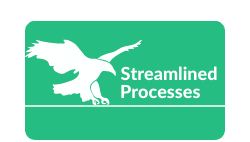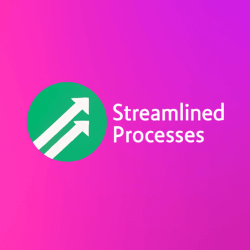For Data-Driven Lead Generation Platforms, see our main page here.
What Are Data-Driven Lead Generation Platforms?
Data-Driven Lead Generation Platforms are tools that collect and analyze data to find high-quality sales leads. They automate prospect discovery, scoring, engagement, and nurturing using advanced algorithms and integrations.
Unlike older systems that rely on guesswork or cold outreach, these platforms make intelligent decisions based on behavioral and firmographic data. As a result, businesses save time and improve conversion rates.
For example, instead of reaching out to every website visitor, a data-driven system might target only those who’ve shown repeated interest or match your ideal client profile. Platforms like ZoomInfo, Leadfeeder, or Clearbit excel in providing these deep insights.
Why Businesses Choose Data-Backed Lead Generation Methods
Modern B2B and B2C sales teams rely heavily on actionable data. As budgets shrink and competition rises, they can’t afford to shoot in the dark. Data-Driven Lead Generation Platforms help target the right audience, at the right time, through the right channel.
According to DemandGen’s 2023 Benchmark Report, companies using foundational data outperformed their peers in lead-to-customer conversion by 29%. That edge can define long-term success in crowded markets.
Moreover, compliance regulations like GDPR and CCPA have tightened the rules for outreach. Data-first platforms ensure not only better targeting but also regulatory alignment—by keeping track of consent and user intent.
Core Features of Data-Driven Lead Generation Platforms
Not all platforms are built the same, but most offer a set of powerful features designed to assist in identifying and converting prospects:
- Lead Scoring: Automatically prioritize leads based on engagement, firmographics, or predictive data.
- Intent Data: Identify prospects actively considering your solution by monitoring behavior across the web.
- Email and Outreach Automation: Build workflows that nurture leads based on data-triggered actions.
- CRM Integration: Sync seamlessly with platforms like Salesforce, HubSpot, or Zoho for unified tracking.
- Segmentation & Filtering: Drill down to exact verticals, roles, or regions based on dozens of variables.
For example, a digital agency might use intent data to know when a prospect searches for “web design help,” allowing sales teams to reach out at the ideal moment. This level of precision wasn’t possible a decade ago.
Top Use Cases Across Industries
Data-Driven Lead Generation Platforms aren’t limited to one sector—they span multiple verticals. Here are a few common applications:
- Software and SaaS: Monitor trial users, abandoned carts, and demo requests to nurture and upsell effectively.
- Recruitment Agencies: Search job posting trends to find roles that match their placement services.
- Manufacturing: Target businesses expanding or purchasing new production equipment.
- Education: Track student inquiries, geographic trends, or competitors’ delays to attract new applicants.
- Real Estate: Discover investment firms tracking local markets with buying intent.
Each sector tweaks the platform’s capabilities to suit their particular lead funnel. Consequently, personalization becomes scalable—something manual teams couldn’t achieve efficiently.
Comparing Leading Platforms
Choosing the right tool means understanding your goals and budget. Here’s a quick comparison of leading Data-Driven Lead Generation Platforms:
- ZoomInfo: Great for large B2B businesses needing enterprise-level contact data and enrichment tools.
- Leadfeeder: Ideal for mid-sized businesses wanting to identify anonymous website visitors using IP tracking.
- Clearbit: Strong API and enrichment features; widely used in SaaS for real-time data pulling.
- Lusha: Best for small sales teams and recruiters looking for accurate direct dials and emails.
- 6sense: Excellent at predicting buyer readiness and integrating deeply with ABM workflows.
Each platform has unique strengths. Therefore, it’s important to map your sales cycle and team size against the features that matter most.
Trends Shaping the Future of Data-Driven Systems
Technology is moving fast, and Data-Driven Lead Generation Platforms are evolving with it. Artificial intelligence is playing a larger role in refining lead recommendations. For example, AI-driven models now suggest content topics or next actions based on buyer behavior in real-time.
Meanwhile, privacy concerns are making zero-party data (freely given by users) a central pillar in lead profiling. Platforms now encourage gated content or quizzes to collect intent-rich data directly from users.
In addition, real-time integrations are replacing static databases. Instead of pulling lists monthly, teams now get fresh insights hourly—if not instantly—through API-driven platforms.
This shift means businesses are no longer just fast; they’re proactive.
How to Maximize Success With Data-Driven Lead Generation Platforms
To get the most value from these systems, companies must go beyond installation. Success depends on alignment across teams, quality inputs, and continuous iteration.
- Define Clear Buyer Personas: Platforms perform best when calibrated toward specific roles, industries, or company sizes.
- Audit Data Sources: Eliminate outdated or low-quality data that could skew lead prioritization.
- Train Sales and Marketing Teams: Help users interpret and act on platform insights consistently.
- Test and Tweak Regularly: Run A/B tests, refine triggers, and monitor attribution over time.
For example, a B2B SaaS company that focused only on email opens but ignored demo bookings may have misaligned metrics. By refining triggers based on both actions, they doubled their meetings booked within three months of reconfiguration.
FAQ About Data-Driven Lead Generation Platforms
Are these platforms only useful for large companies?
Not at all. Platforms like Lusha and Leadfeeder cater to small and mid-sized businesses with scalable pricing and intuitive features. More importantly, the time saved offsets the cost rapidly—even for startups.
Can I use them with existing CRMs?
Yes. Most tools offer native integrations with Salesforce, HubSpot, Pipedrive, Zoho, and more. Some even include Zapier or custom API access for advanced setups.
How accurate is the data?
Accuracy varies by provider and region. Platforms like ZoomInfo claim over 95% accuracy for U.S. data, but it’s smart to validate email deliverability before large campaigns.
What type of investment do these platforms require?
Prices range from $30/month for basic enrichment tools to over $1,000/month for enterprise suites. Evaluate ROI by comparing leads generated versus cost per lead.
Final Thoughts on Platform Adoption
To sum up, Data-Driven Lead Generation Platforms are revolutionizing how modern businesses attract, engage, and win customers. Their combination of automation, insight, and scalability makes them indispensable in competitive industries.
This article was created with the assistance of AI tools and reviewed by our team at Streamlined Processes LLC to ensure accuracy and relevance.
Follow us on Facebook here.

